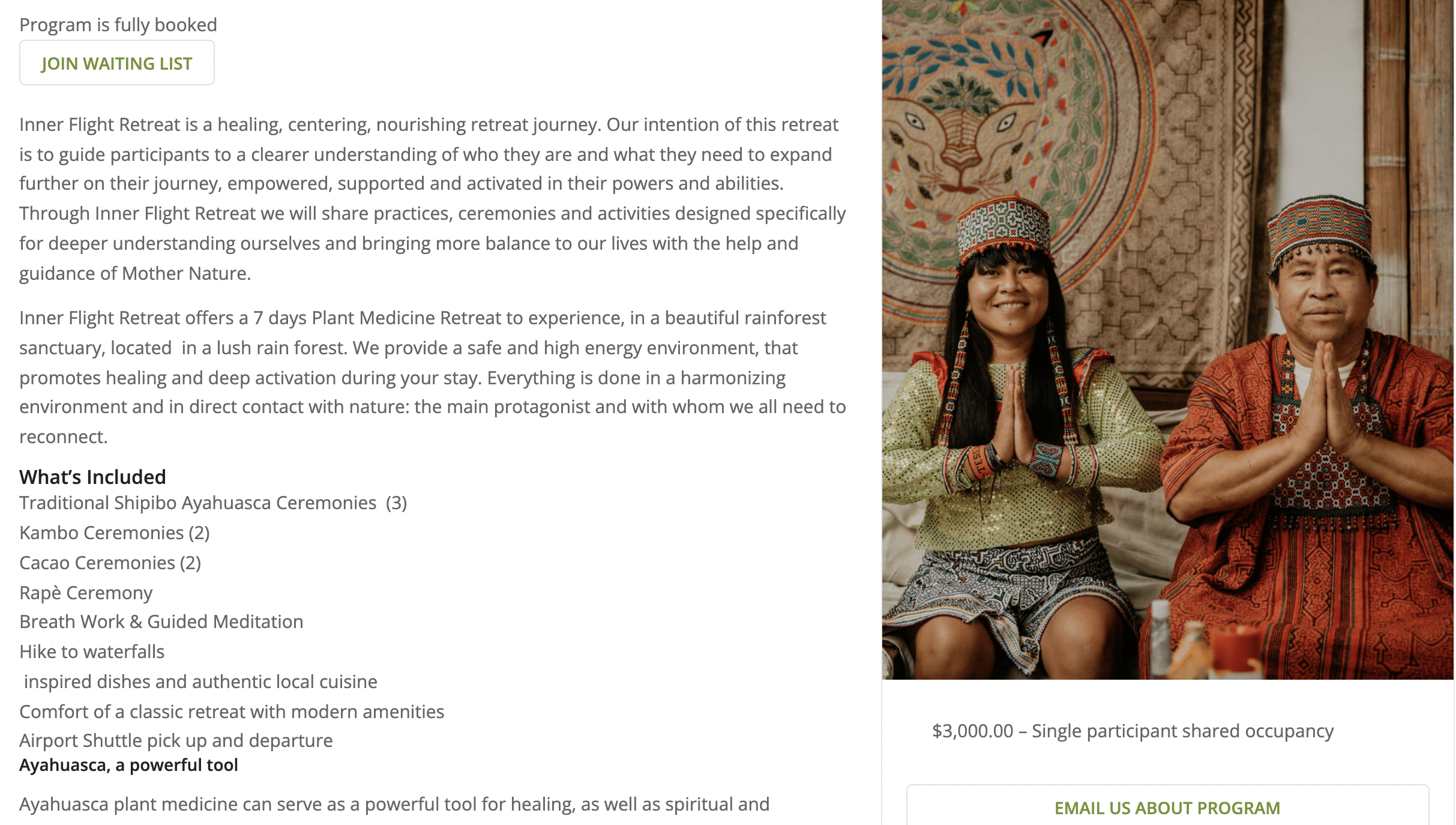What is a Cacao Ceremony? How Does it Work?
A cacao ceremony is perfect for someone wanting to experience and grow through shamanic ritual without the often intense experience associated with Ayahuasca.
Usually a relaxed, tranquil experience, the cacao ceremony is used to open the heart spiritually through the intense raw cacao beverage, paving the way to self-love and healing.
What happens during a cacao ceremony?
We know that cacao ceremonies are centuries old, dating back to the Mayans and Aztecs. Unfortunately, we don’t know how these ceremonies were conducted, so while modern rituals have some things in common, every ceremony is different.
Depending on the shaman or ceremony leader, and the needs of the group, a ceremony can include dance, light music, or simple meditation amongst other things.
You can expect a sacred space, a guided setting of intentions, pouring and drinking the cacao, and time to yourself to experience the heart-opening effects of the cacao.
A cacao ceremony helps you to rebalance yourself internally, release negativity, and restore yourself. It is a healing ceremony on a spiritual level that will open you to connections and help you examine yourself without the concern of a psychedelic trip.
What is in the cacao beverage?
The drink is made from raw cacao. Raw cacao means the unroasted beans are cold pressed and never reaches a temperature over 42C degrees during the process. There are no dairy or sugar additives, making it completely different to the cup of cocoa you might be used to.
Natural, unsweetened cacao is bitter, despite the rich delicious scent.
Although the original rituals and ceremonies around cacao have been lost, we know that traditionally cacao was served with chili and honey. Depending on the ceremony – and every ceremony is different – the shaman may choose to keep it plain, or add spices and honey to it.
Ceremonial grade cacao comes from either the Criolla strain found in Guatemala or the Chuncho strain, sourced from Peru. To be considered ceremonial grade, the plants must be wild and traditionally grown, which means they are highly concentrated – exactly what you want for a ceremony.
The entire bean is used and ground down by hand, with no commercialised machinery involved. Using the entire bean means the natural compounds so vital to the ceremony are preserved.
It also means that the cacao butter is not removed. Raw cacao can be considered a true whole food because it hasn’t been defatted, keeping all the beneficial nutrients the bean contains.
Ceremonial cacao comes in different forms, from a crumble to a disk or bar that is crumbled or chopped up for the ceremony before hot water is added.
What are the physical effects of cacao?
Cacao is considered a powerful anti-inflammatory, and contains powerful anti-oxidants, flavanols – which lower blood pressure and fight cell damage – and micronutrients known as polyphenols.
The flavonoids have been shown to interact with dopamine and serotonin in the body, working as a mood booster on top of the physical benefits.
Just smelling the aroma tends to make us feel good, one of the reasons that chocolate is so popular.
Because of the theobromine, most people describe the effect of cacao as warm and uplifting – the cacao “hum” that results in feeling elated after drinking it.
Cacao side-effects, and contra-indications
The ceremonial drink can contain between 1.5 to 2 ounces of cacao. This is a strong dose, and can have physical side-effects that you should be aware of based on your health and medical history.
While cacao is certainly stimulating, mainly due to its theobromine content, it is not classified as a psychedelic and is legal to buy.
Cacao is classified as “generally recognised as safe” by the FDA, and its effects are modest, even in the higher dosages that would be consumed in a ceremony.
However, anyone on antidepressants, particularly MAOIs and some SSRIs, will want to talk to their doctor before trying it.
Because MAOI-based anti-depressants interact negatively with the tyramine in chocolate, a higher cacao dose is not recommended. Antidepressants based on MAOI are first-generation antidepressants that are becoming less prescribed.
People who take them are on a limited diet that includes limiting or avoiding chocolate, so will likely know whether or not they can consume it. Severe headaches and nausea are possible side effects, so double-check your meds beforehand.
Additionally, because of the MAOIs in cacao, there has been some concern with higher dosages of cacao with SSRI type anti-depressants, and suggestions that tryptophan, a form of MAOI that is a precursor to serotonin, could be a contraindication.
Cacao contains theobromine, which raises the heart rate and acts as a vasodilator, decreasing blood pressure. If you have a serious heart condition, or are pregnant or breast-feeding, you will either need to use a much lower dose than normal, or skip the cacao ceremony altogether.
If you are unsure in anyway, check with your doctor before taking part in a cacao ceremony, and make sure to advise the ceremony leader of any medications you are on.
The cacao spirit
Connecting with the spirit of cacao through a cacao ceremony allows you heal mind, body and spirit. It gives you permission to love yourself with all of the possibilities that you can be.
It helps you to visualise your goals and reveals your passions and goals through awakening and inner healing.
The plant spirit of cacao is powerful, but gentle and nurturing. It invites you to work with forgiveness and acceptance, and opens your creativity – one of the reasons it is very popular with artists of all types.
Whether you’re an experienced ceremony attendee or a first-timer, a cacao ceremony can open up a world of possibilities for you.





